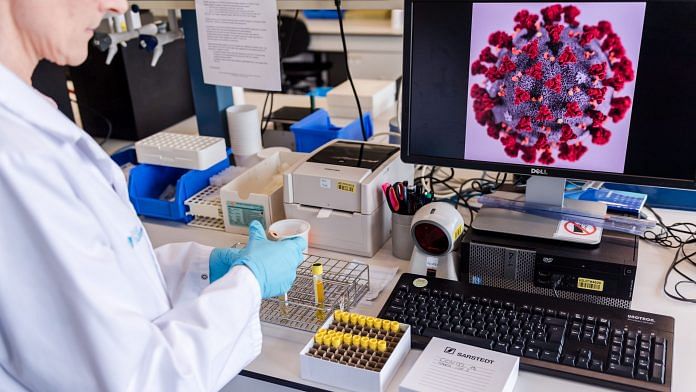New Delhi: Journalists are on the frontline in this Covid-19 crisis along with policemen, health workers and many other essential service personnel. Reporters often expose themselves to the danger of contracting the infection while covering news in hotspots and crowded areas.
Two journalists of ThePrint, reporter Simrin Sirur and National Photo Editor Praveen Jain, and their driver Anil Kumar, had contracted the virus while on an assignment in Vadodara, Gujarat.
Simrin, Praveen and Anil had set out from Delhi on 11 April to cover the pandemic and travelled through Jaipur, Ajmer, Kota, Udaipur and Ahmedabad before reaching Vadodara.
Praveen knew they were going to cover hotspot areas, so he knew they could be infected and were mentally prepared. Simrin also said that Praveen had told her to be prepared for that eventuality during their trip.
Also read: At Vadodara quarantine facility, patients bid emotional goodbyes to ThePrint journalists
Evolving research
Covid-19 is new to scientists and different from other coronaviruses. Scientists don’t understand it well yet. To speed up the process of getting information out there, scientists publish preprints (research that is yet to be peer-reviewed) to share their latest findings. Among such preprints has emerged the news that there has been a change in our understanding of how the virus spreads through touching contaminated surfaces.
The Centers for Disease Control and Prevention in the US now says the SARS-CoV-2 virus “does not spread easily” from “touching surfaces or objects”, while it had earlier said, “It may be possible that a person can get COVID-19 by touching a surface or object that has the virus on it and then touching their own mouth, nose, or possibly their eyes”.
The change in language is very subtle, but suggests a lot.
A study from Heinsberg in Germany, the epicentre of the outbreak in the country, had found that the virus samples taken from surfaces such as washbasins, mobile phones and remote controls could not be cultivated in a lab, raising the possibility that the virus is sensitive to drying out.
Watch the full episode here:



